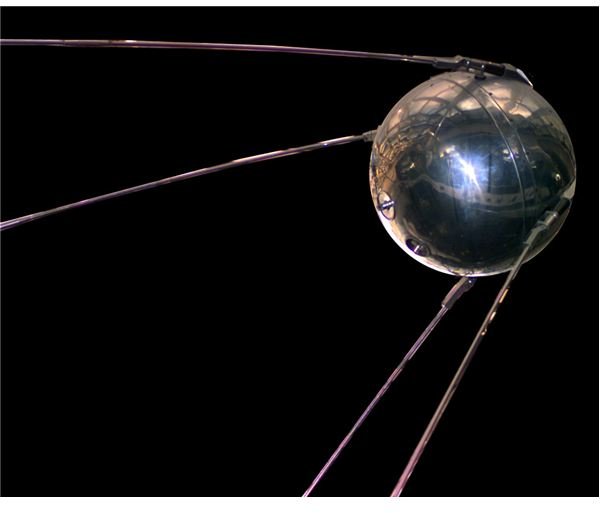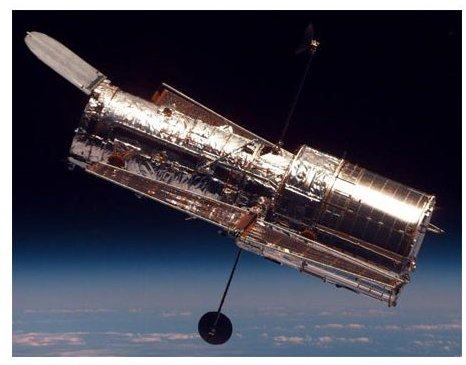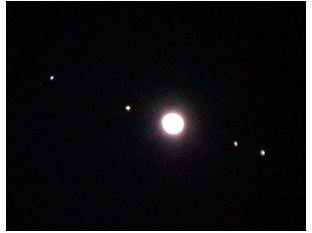What Is A Space Satellite? Learn the Definition of a Satellite, Uses & More
The Definition Of A Satellite
There are many flavors of definitions for the word, satellite. We will confine ourselves to the astronomical definition of a satellite in this discussion. According to Merriam-Webster, a satellite is:
a: A celestial body orbiting another of larger size
b: a manufactured object or vehicle intended to orbit the Earth, the moon, or other celestial body
Natural Versus Artificial Satellites
We are all familiar with our Moon, the only natural satellite of Earth. Mankind has gazed at the Moon for millennia, and created much myth and folklore about it, but only recently have we begun to understand its origins. It wasn’t until Galileo pointed his telescope at the planet Jupiter in 1610 that mankind became aware of the idea of satellites – moons – orbiting other planets. In most cases these natural satellites formed along with the planets from the primordial dust cloud that our Solar System coalesced from. In a few cases, like Mars, the natural satellites were gravitationally captured some time after the planet formed.
Artificial Satellites

Our contribution to the number of satellites that exist in the Solar System began in 1957, when the Soviet Union beat the United States into orbit with their space satellite, Sputnik 1. The Soviets quickly followed that up with Sputnik 2, before the US could launch Explorer I. These satellites were very simple in nature and in the case of the first Sputnik; it only broadcast radio signals that could be tracked by shortwave radio operators for period of 22 days before its batteries ran out.
Space satellites have evolved from these simple battery-powered devices to a vast variety of complex, computer controlled systems, with redundant circuitry to provide a backup if there is a failure of the main electronics. Many of today’s satellites have the ability to upgrade their programming software, which allows them to be more flexible and extends their useful lifetimes. Satellites serve the commercial, military, and scientific fields. Using solar cells or radio isotope thermoelectric generators (RTG) as their power sources they have operated for years and in some cases, like Pioneer and Voyager – decades.
Common Uses For Space Satellites
Commercial satellites provide our telephone, television and other communication needs, while our weather satellites help us track major storm systems and predict the weather patterns around the globe.
Military satellites monitor the globe, providing information about vehicle movements, troop and equipment deployments, and missile launches, among other highly classified information. Our global positioning system would not be possible today if it were not for military satellites.
Scientific satellites have opened up the cosmos for us to begin to understand how it works. From looking down on our home planet

with satellites monitoring everything from water and ice distribution, plant growth, sea level height, air pollution, and ocean temperatures, to looking out into the depths of space with Hubble, Spitzer, Chandra, and more recently, Kepler and WISE, to name just a few. These space satellites are telescopes that can examine the cosmos across the electromagnetic spectrum. They can peer through the veils of dust and gas to see into stellar nurseries and galactic cores. And, they contribute to our knowledge of how solar systems and galaxies formed, find extra-solar planets and help us see back in time to the early Universe.
There is a collection of space satellites that are exploring our Solar System from SOHO, the Solar and Heliospheric Observatory monitoring the Sun, to New Horizons on its way to Pluto, arriving in 2015. All the planets have been visited by a man-made satellite at least once, and we’ve landed on two planets, Venus and Mars, and two natural satellites, our Moon and Titan, a moon of Saturn. There have also been two landings on asteroids. One by the Japanese satellite, Hayabusa, on the asteroid Itokawa, and another impromptu landing by NASA’s NEAR satellite on the asteroid Eros. We’ve sampled dust from comets, flown by asteroids, and mapped the surfaces of many objects with our space satellites.
What Is A Space Satellite? It’s So Much More Than We Thought!
So, a space satellite is much more than an artificial satellite that orbits a celestial body. They are semi-autonomous explorers of the Universe about us, an extension of mankind, allowing us to see things we would never see due to the limitations of our biology and confinement to our home planet.
